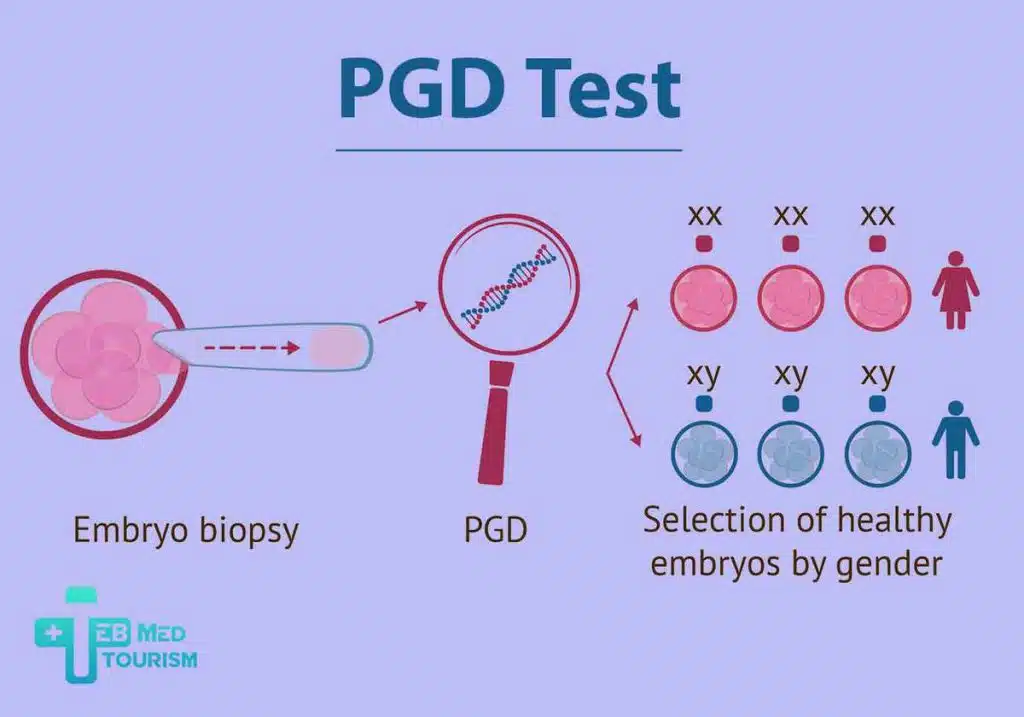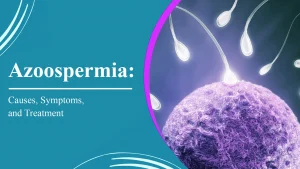
PGD test:
Pre-implantation Genetic Diagnosis or PGD is a genetic testing procedure that is performed through in vitro fertilization (IVF). It should be noted that if the couple cannot conceive a child in a natural way, other methods such as in vitro fertilization (IVF) would be used as a medical aid for conceiving in the laboratory.
In this case, the PGD method should be used to assess the genetics of the embryo. PGD can be considered as an additional method to help with fertility. Most doctors do a genetic test and place the embryo in the uterus through IVF. In this way, samples of fetal cells that are also called “biopsy’ are used for genetic testing of the fetus. This test can detect genetic abnormalities, chromosomal abnormalities, and sex abnormalities.
How PGD Prevent Abnormalities?
Most couples who suffer from infertility can solve this problem with PGD, which examines chromosomal abnormalities. This method allows you to determine the number of chromosomes and check using the FISH method. Almost 60% of miscarriages are linked to chromosomal abnormalities, and treating them can increase your chance of getting pregnant. PGD can also prevent the fetus from developing diseases such as hemophilia.
PGD technique will determine the sex of preimplantation embryos based on X-linked diseases, which include muscular dystrophy, mental retardation, and fragile X syndrome. PGD tests identify genetic defects such as cystic fibrosis, Tay-Sachs disease, brain cancer, and Huntington’s disease. These abnormalities can be detected by molecular methods.
For whom is the PGD Test Recommended?
Couples should remember that the PGD test can only be done with a doctor’s prescription. Indeed, as mentioned earlier, this test is performed to assess genetic diseases prior to embryo transfer. Therefore, if doctors suggest that the couple may have bad genes and certain diseases, this test should be done. Those who have the below conditions can be candidates for PGD test.
- Women over 35.
- A couple with a history of genetic diseases.
- A woman who had recurrent miscarriages.
- Women who use the IVF method but fail to conceive.
- Parents of children with genetic diseases
PGD Procedure
The PGD test is used to examine an embryo or fetus that has undergone laboratory fertilization. This test requires the couple to go through the IVF process. For this, the first ovarian stimulation is performed to produce more eggs. Then an oocyte puncture, or egg retrieval, is performed, and the mature eggs are removed from the woman’s body.
In the next step, the sperm was also collected and fertilized with eggs in the laboratory. After 3 days, embryonic division begins, and the embryo divides into 8 cells, each with 24 chromosomes (22 autosomes and 2 sex chromosomes). In this step, one or two embryonic cells (blastomeres) are taken by biopsy from all the embryos that have been created and are tested for any chromosomal abnormality or genetic disorders.
It may seem that the removal of some cells can cause problems for the fetus. However, when this test is done, the fetus is left longer in the laboratory to recreate the cells that have been removed. This time can also help to identify chromosomal abnormalities before they are transferred to the uterus.
About a week later, the results of the biopsy are determined. If the fetus has no genetic abnormalities, it is transferred to the uterus, and if suspected, other genetic testing such as amniocentesis or chorionic fluid collection will also be done during pregnancy.
The embryos with genetic defects are discarded, and finally a healthy embryo is transferred to the uterus of the mother. Two weeks later, the woman will have a pregnancy test, and if the pregnancy test shows a positive result, then she is successfully pregnant. It should be noted that if there were other healthy embryos, the doctor would freeze them so that they can be used for the next cycle if they have problems with treatment.
PGD Procedure for Sex Selection
It has been proven for many years that the sex of the fetus is determined by the chromosomes carried by the sperm. Indeed, some sperms have a male chromosome (Y) and others a female chromosome (X). When the sperm has an X chromosome, by combining with the X chromosome of the female egg, the XX female embryo is created.
On the other hand, if the sperm has a Y chromosome, it will be combined with the X chromosome of the egg and as the result, the embryo will have an XY male chromosome. The PGD method assesses the genetic content of preimplantation embryos to determine each sex.
Gender selection is generally used to balance the sex of children in the family, or sometimes it is used on demand because the parents prefer a specific sex for their child. In addition, some genetic diseases (sex-linked disorders) affect a specific sex; therefore, gender selection can prevent transmitting a genetic disease to the baby.
Specialist doctors evaluate the genetic structure of the embryo and examine it to detect genetic diseases and gender discrimination. Depending on the desired sex of the mother and father, one of the healthy embryos is transferred to the mother’s uterus.
Due to the many advances that have been made in sex selection, the results are highly reliable with 99.9% accuracy. After the embryo transfer, the process of pregnancy and childbirth continues. Based on this knowledge, technology is always looking for a safe way to separate the specific sperm, fertilize the egg, and give birth to the embryo with the desired sex.
Of course, it is important to remember that it is not necessary to use this method for gender selection since the IVF procedure must be used to determine the sex of the child, and this method reduces your chances of pregnancy from 30 to 40%.
Is Prenatal Testing Still Necessary After PGD?
Since PGD is performed in very small tissue, the test cannot be 100% accurate. Modern PGD tests using karyomapping have a greater than 95% chance of successfully detecting embryos affected by certain genetic diseases. A pregnancy test (such as amniocentesis or chorionic villus sampling- CVS) is recommended to ensure that the pregnancy is not terminated, as there are fewer false diagnoses. Amniocentesis and CVS are more accurate because they collect thousands of cells from the fetus.
Is PGD Guaranteed?
PGD tests are highly accurate and prevent genetic diseases to a large extent; however, a 100% guarantee cannot be provided that a problem will always be detected. Some genetic abnormalities may not be detected even through PGD. Prenatal genetic testing in the first trimester may confirm the results of PGD or reveal other genetic issues.
These first-trimester tests are generally very safe, but they might carry a small risk of miscarriage in some cases. For gender selection and family balancing, PGD is a great way to have a baby boy or baby girl as you desire. For sex selection, PGD offers almost 100% accurate results.
When the embryos are a few days old, the embryologist checks them for X and Y chromosomes in order to determine the gender of each embryo. In the end, you should know that in most cases the benefits of PGD outweigh the risk of undergoing it.
Are you still wondering if you should consider PGD? Contact TebMedTourism physicians because we can provide you with more information, answer your questions, and help you come to your own conclusions about whether this procedure is right for you.
We would love to appreciate the most knowledgeable and expert Iranian physicians and embryologists in our team, who help us to make your dream come true. TebMedTourism has a high success rate in IVF+PGD in Iran because our embryologists are very careful with choosing the healthiest embryos to be transferred.














